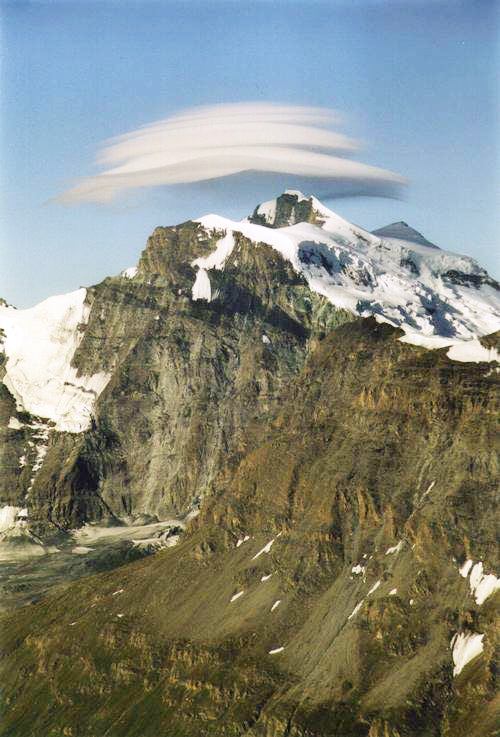 |
 |

|
 |
LENTICULAR CLOUD
E.R.A. Coyajee
Delft University of Technology, The Netherlands
Lenticular clouds are created by the effect of hills or mountains on flow in our
atmosphere. Air approaching a mountain is forced to ascend. As the air
rises, the pressure on it decreases so it is able to expand and cool.
At a certain altitude the air temperature falls below the dew point temperature
and vapor in the air will start to condensate. As the air moves over the
mountain, its moisture will remain condensated, i.e. the lenticular cloud
appears. Having moved over or about the top of the mountain, the air is
no longer forced to stay up and it starts to descend. Heating as it moves
downward, moisture in the air will revaporize below the altitude for which
the dew point temperature of the air is exceeded, i.e. the lenticular
cloud ceases to exist beyond this point. The processes of condensation
and revaporization of vapor in the air take place irrespective of the
magnitude of the velocity in the flow, as these processes are forced by
the mountain topography. As a result, these lenticular clouds are more
or less fixed with respect to the mountain, although they consist of different
material at each point in time. The particular mountains are the Grand
Combin (4314 m) and the Dent Blanche (4357 m). The pictures were taken
on July 30th 2003, at 07:30 hrs. Both views were put on film, using
a Nikon F65 with a 28-105 mm Nikon lens, from a peak called La Luette
(3548 m, Wallis, Switzerland).
|
 |
 |
|